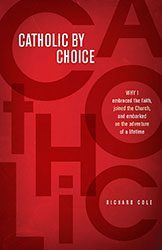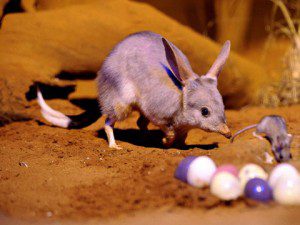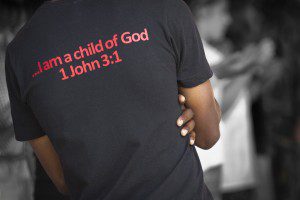Author, Catholic By Choice
This time every year, I think about the celebration of Easter in Australia. What’s it like down under where Lent is the high tide of autumn and Easter is a harvest season?
For one thing, I’m told that you won’t see any chocolate Easter bunnies. Rabbits are an invasive species causing significant damage to crops and the environment. Instead, parents tell their children that Easter eggs are hidden by the Easter bilby, a small, shy mammal with big ears, which is native to Australia and an endangered species. Parents buy chocolate bilbies, and some of the profits go to help preserve these animals.
But aside from Easter bilbies, what about the seasons? In the north, we see our early spring as the appropriate time for Lent. In centuries past, February to March was the starving end of winter, with food supplies almost depleted and no new crops until April. It makes sense to observe a season of fasting and waiting for the spring’s first abundance that coincides, we might say naturally coincides with resurrection of Christ.
So is Easter in autumn for Australians a kind of force fit, something like Christmas in Florida with fake snow and Santas dressed in shorts?
I think not. Actually, the fact that the seasons down under are reversed from ours can remind us that Christianity sees always the two sides of divine truth, the light at the center of darkness and the dark before the light. Easter has no meaning without Good Friday. It’s a package deal, and this reveals the deep understanding of our relationship with God, the world and one another. Easter would be meaningless without Good Friday, and Good Friday leads to Easter. The 14 Stations of the Cross are just that — stations, not terminals, and they lead us to the next station, Easter, just down the line.
Christmas is also a paradox. The birth of Jesus is a moment of light that occurs in a very dark season. It’s no surprise that our favorite Christmas stories often revolve around death, unhappiness, and the possibility of a painful, even tragic, loss. In Dickens’s “A Christmas Carol,” Scrooge sees his life as three different kinds of death—past, present, and a possible future, complete with his own funeral, horribly cold and lonely. In the movie “It’s a Wonderful Life,” George Bailey literally stands on the brink of suicide, on a snowy bridge in December, staring down at the black waters where he once saved his brother from drowning. Even the Grinch almost steals Christmas. None of these stories are tragedies, of course; they all have happy endings. But they remind us that darkness and light are necessary for the plot, and we cannot understand the season without passing through a quiet darkness that leads to Christmas Eve.
So I keep in mind the Easter down under. It helps me to understand how Good Friday and Easter need to work together, how Christmas arrives in the middle of winter as well as the height of summer, how Easter can also be a harvest that sustains us as we move into our own, long winter. Easter happens all over the world – and every season, spring or fall, is the right one in which to celebrate.
 Richard Cole is the author of two collections of poetry: The Glass Children and Success Stories. His poetry and prose have been published in The New Yorker, Poetry, The Sun, Hudson Review and Image Journal: Good Letters. He lives with his family in Austin, TX. Learn more at www.richard-cole.net.
Richard Cole is the author of two collections of poetry: The Glass Children and Success Stories. His poetry and prose have been published in The New Yorker, Poetry, The Sun, Hudson Review and Image Journal: Good Letters. He lives with his family in Austin, TX. Learn more at www.richard-cole.net.
Visit the Patheos Book Club on Richard Cole’s new book, Catholic By Choice.














